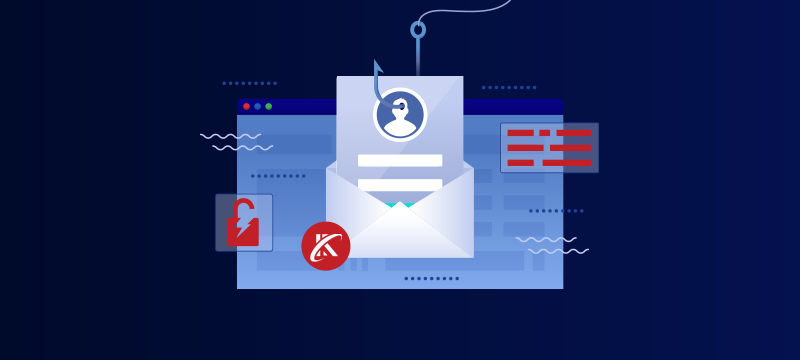Cybercriminals are getting cleverer in the way they attack businesses and individuals. They are using more advanced tools, including AI, to help them and, as technology evolves, they are finding new vulnerabilities to exploit. Here we look at five unexpected ways a hacker might try to attack.
Hacking your email account
Getting access to your email accounts can cause serious issues. Your emails might contain important information, such as details of your bank accounts, and this can enable cybercriminals to get access to these and potentially steal or defraud you. There might also be personal information in your emails that they can use to ransom you. Access to your email account also lets cybercriminals send malicious emails in your name to people in your contact lists.
There are various ways your email can be hacked. This can include using viruses in emails that, once activated, act as spyware recording your login credentials. They can also use brute force attacks. Once they have access, they will then change the email password, preventing you from getting into your account, and leaving them free to carry out malicious activities.
Getting hacked when paying online
You can get hacked when paying online through what is known as a Man in the Browser (MitB) attack. This can happen if a cybercriminal has been able to install malware on your system (e.g., through malicious email) that can spy on your activities, steal data and modify your web transactions. This enables the hacker to intercept communications between you and your bank, so they can manipulate your internet banking services and change transaction verifications in order to steal from you.
Want to avoid getting hacked? Read How to Spot and Prevent Online Fraud.
Phishing
Phishing is an increasingly common form of cyberattack in which a hacker sends an email purporting to come from a business or individual you know. When done well, phishing emails can be hard to distinguish from genuine emails and this results in people clicking on links or opening attachments. Attachments often contain malware, including ransomware, and the links usually take you to a fake website where you are asked to log in to verify your account. In reality, your login credentials are being stolen. If this email is pretending to be from your bank, entering your details could result in your account being emptied.
Other phishing emails ask you to give information or carry out actions. There are numerous instances of finance employees receiving phishing emails supposedly sent by company directors asking for funds to be paid into accounts. Those accounts, of course, belong to the cybercriminals.
Controlling your webcam
Webcam hacking enables a cybercriminal to take control of your computer’s webcam, spy on you and record your activities. Control of the webcam can be gained via malware, often disguised as a hidden application. This form of hacking has several malicious uses, it can be used to record intimate activities and then ransom people not to publicly share the recordings; it can be used to give thieves an inside view of a premises, showing easy points of entry and the location of valuables; and it allows users to steal important business intelligence by listening in on conversations.
Smartphone hacking
We store so much personal and financial information on our phones that if someone hacked yours, it could result in serious consequences. The perpetrator would be able to access your apps, including banking and personal messaging, as well as your microphone, camera and the data on your SIM card.
Phones can be hacked in many ways, including from clicking on links and attachments in emails, visiting malicious websites, or using weakly protected Wi-Fi and Bluetooth connections.
Protecting yourself
Today, there are lots of measures you can take to minimise the risk of getting hacked. These include using strong passwords, two-factor authentication and biometric logins. With malicious emails being the source of many cyberattacks, it is also important to learn to spot these kinds of emails and make use of robust spam filtering tools, like Spam Experts, that prevent them from getting to your inbox.
Conclusion
In today’s highly digital world, every individual and business is at some risk of being hacked, ransomed or defrauded. Using sophisticated tools and even third-party hacking services, cybercriminal activity occurs en mass, with people targeted over and over in the relentless pursuit of victims and financial gain. For this reason, everyone needs to take cybersecurity very seriously with all our digital technology, including computers, tablets, phones and IoT devices, as well as with our websites, apps and online accounts. Hopefully, the five areas mentioned here will highlight the growing number of ways that you can be hacked so you can take the necessary measure to protect yourself. If you are looking for web hosting with rock-solid security, visit our homepage.


